
After a little more than 5 years of hard work, I’ve officially completed my Ph.D.! You can read my dissertation (“An Integrative and Interdisciplinary Approach to Shark Conservation: Policy Solutions, Ecosystem Role, and Stakeholder Attitudes”) online here in its entirety.
In case there are some among you who don’t really want to read a 281 page dissertation but are curious about what I found, I’ve prepared this blog post to summarize my key conclusions. (Note: this does not include every conclusion. Some are aggregated together, and some more technical conclusions are omitted for this summary).
The overall goal of my dissertation was to use an interdisciplinary approach to look at the interactions between scientific research, advocacy, and policy change in the context of shark conservation. Scientific research, advocacy, and policy change can interact with and influence one another in lots of different ways, but this hasn’t been studied for shark conservation research priorities. (Note: for this diagrams, which are called reactionary pathways, focus primarily on the black lines. Question marks and grey lines indicate unknown but possible interactions, and exclamation points indicate novel interactions not previously described in this kind of literature).
In the classic case outlined by Phillis and friends, scientists document a problem, which results in public concern and advocacy, which results in eventual policy change:
In contrast, Phillis and friends noted that in the case of the pesticide DDT, public concern came before extensive scientific research, and resulted in additional scientific research.
I took a look at these interactions in the context of the shark conservation research priorities established by Simpfendorfer aind friends, a paper which I wrote about on the blog.
First, I reviewed the available shark conservation and management policies. You can read the resulting paper, “Shark conservation and management policy: a review and primer for non-specialists,” here. This paper was featured on the cover of Animal Conservation.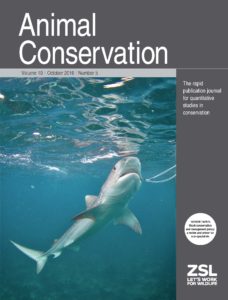 1. I found that although I only ever seem to hear about banning all fishing for sharks or banning the sale of shark fins from ocean conservation twitter, there are actually lots of different kinds of shark conservation and management policies that could be implemented, each with their own pros and cons. They vary pretty widely in scope, intent, or effectiveness for solving a given conservation problem.
1. I found that although I only ever seem to hear about banning all fishing for sharks or banning the sale of shark fins from ocean conservation twitter, there are actually lots of different kinds of shark conservation and management policies that could be implemented, each with their own pros and cons. They vary pretty widely in scope, intent, or effectiveness for solving a given conservation problem.
 2. I found that while there aren’t always clear boundaries between these policies, they can be generally divided into two families that are the modern incarnation of the preservation vs. conservation debate that’s been ongoing in environmental circles for more than a century. “Target-based” policies like fisheries quotas aim to maximize fisheries exploitation, while “limit-based” policies aim to restrict or ban exploitation as much as possible. (This terminology comes from a paper by Caddy and McGarvey). I created a flow chart to optimize the selection of the most effective policy for a given conservation goal, which starts with the division between target-based and limit-based policies.
2. I found that while there aren’t always clear boundaries between these policies, they can be generally divided into two families that are the modern incarnation of the preservation vs. conservation debate that’s been ongoing in environmental circles for more than a century. “Target-based” policies like fisheries quotas aim to maximize fisheries exploitation, while “limit-based” policies aim to restrict or ban exploitation as much as possible. (This terminology comes from a paper by Caddy and McGarvey). I created a flow chart to optimize the selection of the most effective policy for a given conservation goal, which starts with the division between target-based and limit-based policies.
3. I found that while specific conservation and management goals may differ between different stakeholder groups, there are general recommendations that show up again and again in the literature.
4. I found that there is no one “silver bullet” solution to solve the shark conservation crisis, and that the most effective policy for a given problem will depend on a variety of biological, management, and social factors.
Next, I surveyed a group of shark researchers about their perspectives on how scientific research, advocacy, and policy change interact in the context of shark conservation. You can read the resulting paper, “Preferred Conservation Policies of Shark Researchers,” which was published in Conservation Biology, here. You can also read some of the resulting media coverage here, here, and here.
5. I found that shark researchers consider themselves to be knowledgeable about and actively involved in shark conservation and management advocacy. Seventy-five percent of my respondents agreed with the statement “scientists have a responsibility to actively advocate for sound management policies,” compared with only 16% of respondents in a survey of ecologists by Steel and friends. Additionally, more than half of respondents had submitted formal public comments to policymakers, and more than half included specific policy suggestions in their papers. More than three-quarters have signed petitions. In the context of my reactionary pathway diagram, this would be represented as scientists bypassing the traditional public concern and advocacy phase entirely.
6. I found that although some conservationists believe that sustainable shark fisheries are impossible and shouldn’t be attempted, scientific researchers disagree. Specifically, my respondents believe that sustainable fisheries are possible, are occurring in some (but not very many) places in the world today, and should be the goal of conservation advocacy instead of trying to ban fisheries.
7. I found that these patterns hold true even when correcting for whether or not respondents have earned a Ph.D. and whether or not respondents have a background in fisheries management.
8. I found that while most available conservation and management policies were supported by scientific researchers, target-based fisheries received significantly higher support than limit-based fisheries, with shark fin bans and shark sanctuaries receiving the lowest support (and highest opposition).
9. I found that researchers who opposed fin bans and shark sanctuaries had objections that ranged from the logistical (e.g., “Limited effectiveness, how do you police this?”) to the philosophical (e.g., “when shark populations are sustainable, this is not necessary.”) For fin bans specifically, some researchers who oppose fin bans referenced the idea of “full use” (i.e., if fishermen are already killing sharks, which they are, not using the fins is wasteful.) In the context of my reactionary pathway diagram, this would be represented as scientists supporting one policy solution while advocates support a different policy solution.
10. I found that some beliefs related to shark conservation policy were related to scientists’ areas of expertise, with people trained in fisheries management generally more likely to believe that fisheries management tools work. (Additionally, it is important to note that many of my respondents came from the developed world, and that these patterns of support may be different for people working in developing nations without significant fisheries management infrastructure.)
11. I found that a majority of researchers support ocean conservation non-profits, and that many have donated their time, expertise, or money to help these organizations. However, there were concerns about perceived bad actors in the conservation non-profit community. Some respondents believed that certain non-profits do not focus on the most important problems, do not propose the most effective solutions, and do not share factually accurate information.
Next, I surveyed charterboat fishing captains in Florida who advertise shark fishing trips on their websites. You can read the resulting manuscript, “An assessment of the scale, practices, and conservation implications of Florida’s charterboat-based recreational shark fishery,” here. It was featured on the cover of Fisheries. You can read some of the resulting media coverage here.
12. I found that the 137 charterboats which advertise that they target sharks are found throughout Florida, but are heavily concentrated in the Keys.
13. I found that shark fishing is an important component of charterboat business, though not the most important for most captains. On 88% of analyzed websites, a shark fishing trip was the most expensive type of fishing trip offered.
14. I found that most charterboat captains almost always practice catch and release when fishing for sharks, and this is sometimes used to brand shark fishing as “eco-friendly.”
15. I found that most charterboat captains believe that their clients are either just as happy (or even happier) to release the sharks that they catch instead of killing them.
16. I found that anglers target sharks not for food, but for the challenge or sport associated with targeting large animals.
17. I found that charterboat captains value healthy shark populations for both economic and ecological reasons.
18. I found that charterboat captains in Florida report catching a variety of shark species. The frequency mostly matches what is reported in scientific population surveys, with an important possible exception. Hammerhead sharks are among the species caught by charterboat fishermen (and are among the species that clients most want to catch and are most excited by catching). However, hammerhead populations, while still relatively abundant in some parts of South Florida, have declined significantly throughout their range in recent decades (reviewed in this paper by Gallagher and friends, which I’m a coauthor on). They are also not good candidates for catch and release because of a pronounced stress response to fisheries capture. (It’s also worth noting that some of the species that Florida captains report catching are not found in Atlantic waters, like the leopard shark, and it is also worth noting that “sand sharks,” “bar sharks” and “American sharpnose sharks” are not really a thing).
Next, I looked at a different group of recreational shark anglers in Florida, those who fish for sharks from beaches or piers (termed “land-based anglers” from now on). This paper is not yet published but will be submitted soon. To do this, I looked at posts on an online discussion forum, and analyzed these posts using a hybrid methodology called “virtual ethnography.” To protect the privacy of individual forum users, all posts were anonymized and all faces in photos were blurred. This research was therefore covered under a University of Miami IRB determination of non-human subject research.
19. I found evidence that land-based shark anglers may be a demographically distinct group of anglers. Of 95 forum users who volunteered demographic information, 70% were younger than 30, and 93 were male. In contrast, 53% of Florida’s recreational anglers are women, and 72% are over 34 years old. Additionally, some land-based anglers perceive themselves as relatively low-income (and discriminated against by comparatively wealthy and powerful stakeholder groups). For example, one noted a “desire to keep regular folks out of the rich seaside towns.”
20. I found that a minimum of hundreds of sharks a year are captured by land-based anglers, including dozens of protected species (indicated with an asterisk).
21. I found a minimum of dozens of cases of illegal handling of protected species. As a reminder, protected species must be released “free, immediately, alive and unharmed” and may not be taken completely out of the water. Additionally, it is illegal to delay the release of a protected species to pose for a photograph or measure the catch.
22. I found that compared with other protected species, forum users are significantly less likely to report taking hammerhead sharks out of the water.
23. I found that compared with some other protected species, forum users are significantly more likely to report releasing hammerhead sharks.
24. I found that some forum users are aware of species-specific variability in how fragile some species are. For example, one posted that “certain sharks can handle being landed better than others; lemons, bulls, and tigers are very resilient while hammers and blacktips are not.”
25. I found that the addition of tiger and hammerhead sharks to the state protected species list in 2012 did not significantly change reported patterns of landing or release.
26. I found evidence that some forum users are aware that these actions are illegal, and evidence of planning how to avoid getting in trouble for violating regulations. There were discussions concerning social media privacy settings, noting that anglers should “Take down all pic’s that may be questionable from FACEBOOK.” Another noted that anglers should “FORGET Facebook, it’s a method deliberately designed to track/control people, nothing more, that’s why the lefty ,progressive creep that designed it is now a multi Billionaire; & the CIA has awarded him lots of “perks”….STAY AWAY from Facebook, don’t believe it? do some research.”
27. I found that some forum users are aware of and concerned by shark population declines, and that some share conservation petitions and news articles about shark conservation. Additionally, some noted that their own practices have changed. For example, one noted that “We no longer kill sharks indiscriminately like were the common practice in the shark fishing community in the past.”
28. I found that some forum users believe that commercial overfishing is the only significant threat to sharks, and that therefore recreational shark fishing should not be restricted. However, as I wrote on the blog, recreational shark anglers kill more non-dogfish sharks than commercial shark fishermen in the United States. This suggests that some scientific information has reached a stakeholder group, but other information has not, which would be represented as follows in my reactionary pathway diagram:
29. I found that some forum users see angling regulations as evidence of government overreach in general. For example, one noted that “this is the United States of America and we have the right to live out our dreams. We hurt no one and some communist wants to push their way on us.”
30. I found that some forum users are skeptical of scientific research that is used to support angling regulations. For example, “if they can’t make people believe there is a problem they won’t be given the research grants to study some stuff for the next few years which is where their salaries come from as well.”
31. I found that some forum users see the potential value of working with the scientific community. For example, ““I believe that the only way we will be able to keep this sport alive will not be by battling scientists and researchers with funding and influence, but to come up with some sort of agreement before it’s too late.”
32. I found that while some forum users have pro-environmental attitudes, there were no positive attitudes towards the environmental advocacy community. There were negative attitudes expressed, for example, “biased self-serving interests like the big lobby eco-terrorists.”
33. I found that forum users believe that local bans on shark fishing from beaches are misguided. These bans are sometimes justified in terms of stopping fishermen from attracting sharks to popular swimming beaches. Forum users believe that they are not attracting sharks to the beach, but are targeting sharks which are already there. (This is difficult to test experimentally, but FWIW I mostly agree with the anglers here).
Finally, I used stable isotope analysis to compare relative patterns of isotopic niche breadth and isotopic niche overlap between shark species in three habitats. This paper is not yet published but will be submitted for review soon. For some background on this relatively complex and technical method, see my review paper here (it was featured on the cover of Marine and Freshwater Research). You can also see my blog post about this method here. This chapter was funded by crowdfunded donations to the SciFund Challenge, so thanks to readers who donated!
34. I found that some shark species consistently have the highest relative ratio of nitrogen isotopes, suggesting that they may consistently feed relatively high in the food web. However, I found variation in the relative ratios of nitrogen isotopes among some species, suggesting that they may not always be the top predators in ecosystems where they are found.
35. I found that some species consistently have relatively wide isotopic niches, suggesting that they may consistently have relatively wide diets compared to co-occurring species. Other species, however, vary in the size of their relative isotopic niches compared to co-occurring species.
36. I found that some species have drastically different patterns of isotopic niche overlap with co-occurring species in different habitats where both species are found. For example, blacktip and blacktip sharks SIBER ellipses overlapped almost 100% in Biscayne Bay, but 0% in Florida Bay. Lemon and nurse sharks had the opposite pattern. (For context, non-overlapping SIBER ellipses strongly suggest resource partitioning between species. Overlapping SIBER ellipses may, but do not necessarily, suggest resource sharing between species. These changes in patterns of overlap suggest that patterns of resource partitioning vary between species across the range of those species).
37. I found that while other papers have noted isotopic niche separation between species-aggregated large and small sharks, such separation did not occur here. Note that the SIBER ellipses of “large” and “small” sharks overlap.
Thanks for reading this blog post, and thanks to everyone who contributed to this project! A full list of acknowledgments is included in the dissertation itself.
Here’s an obligatory Wordle of the words I used in my dissertation.

This research was carried out under the following permits:
- University of Miami Institutional Animal Care and Use Committee 15-238
- University of Miami Institutional Review Board 2012-0477
- University of Miami Institutional Review Board 2013-0730
- University of Miami Institutional Review Board Determination of Non-Human Subject Research (2014)
- Florida Fish and Wildlife Conservation Commission SAL 15-0957-SR
- Florida Keys National Marine Sanctuary 2015-168
- National Oceanographic and Atmospheric Administration Highly Migratory Species SHK-EFP-16-02
- Biscayne National Park 2015-SCI-0012
- Everglades National Park 2015-SCI-0011
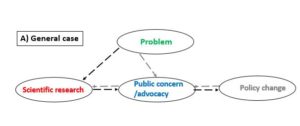
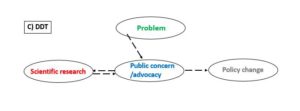






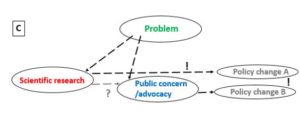











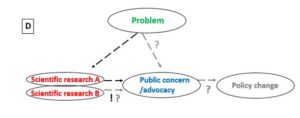



Congratulations! at last you can be asked “how’s the thesis coming?” without going into a rage (assuming you’ve been like every other PhD candidate I’ve known….)
I did not notice anything relating to all the “shark diving” charters, dives, photographers, videographers and others who enjoy interacting with sharks for the purpose of learning about their behavior and being able to share as much with the general public. Despite clear evidence that fishing piers and beach fishing activities along with bait fish migrations are generally responsible for sharks coming close to shore where confusion often leads to shark bites, it is shark diving activities that are routinely blamed for these same bites and which FL FWC has consistently used to maintain a ban against shark feeding during these shark dives. FL FWC is also the primary proponent pushing federal proposed legislation to ban shark feeding in federal waters which are more than 3 nautical miles from the beach. Your thoughts?
I didn’t study SCUBA diving. I studied fishing. And there is absolutely not “clear evidence” that fishing piers are responsible for sharks coming close to shore. Sharks come close to shore all the time, regardless of whether people are fishing there.
Good job. I was especially intrigued by items 36 & 37. Keep up the good work.
Thanks! I think those are some of the most interesting, too, but since they’re also quite technical, I didn’t go into detail in this lay summary. Chapter 6 of the dissertation itself (linked above in the post) puts these into a broader context in more detail.